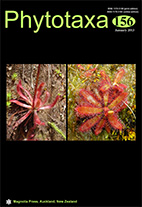Abstract
We investigated the phylogenetic placement of Cyanaeorchis and selected representatives of the tribe Cymbidieae based on nuclear (ITS) and plastid (matK–trnK and rbcL) DNA sequences. Bayesian and parsimony analyses of separate and combined datasets were largely congruent with each other and showed that the Neotropical Cyanaeorchis does not belongs in the predominantly Old World subtribe Eulophiinae, where it has previously been placed. Instead, it is strongly supported as a sister to Grobya in Catasetinae. Because Catasetinae are Neotropical and there are no unequivocal morphological similarities between Cyanaeorchis and other genera in the subtribe, this relationship reflects a geographical rather than morphological similarity and suggest habitat-driven local diversification. Specimens from central Brazil formerly identified as Cyanaeorchis minor are shown to be a distinct species, described here as C. praetermissa. Niche modeling indicates that C. praetermissa and C. minor have different distributions and ecological niches, whereas a third species, C. arundinae has broader climatic tolerances and a distribution that encompasses those of the other two species. The distribution of the genus is also predicted to include Bolivia, the states of Rio de Janeiro, Espirito Santo and several areas in northeastern Brazil, from where no collections are currently known.

